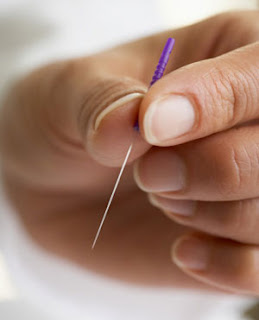History of Cupping
Cupping in the Western World and the Middle East
The ancient Egyptians were the first to use cupping therapy. The oldest medical text book, written in
approximately 1550 BC, in Egypt, describes bleeding by cupping used to ‘remove the foreign matter
from the body’. Hippocrates and Galen were also great advocates of cupping. In the early days the
technique was used solely for bleeding purposes. There were two schools of thought as far as disease
was concerned:
a) starve the source of the sickness of the body
b) bleed to drain it away
Among the Egyptians and various nations, cupping appears to have been considered a remedy for almost
every type of disease as well as an important means of preserving life.
In the book ‘Galen on Blood letting’, disease and health are defined in terms of nature, ‘Disease is an
unnatural state of the body which impairs a function’. This statement ties up with the philosophical
principles of Tibb where ‘imbalance occurs as a result of an individual moving away from his/her ideal
qualitative state’ = unnatural state resulting in the manifestation of disease. Galen continues:
‘The nature does its best to restore unnatural states to their healthy condition. The function of the
Physician is to cooperate with her. When a patient is suffering from a disease, nature is struggling to
overcome the Pathogenic agents and if she is plainly succeeding the Physician should do nothing. If
however she is getting the worse of the struggle, he must come to her aid by doing what she would do if
she could. The Physician must preserve what is according to nature, eliminating what is not.”
Galen continues in saying that the principle indication for blood letting is to eliminate residues or divert
blood from one part to another. The advantage of blood letting over other forms of haemorrhage is that
the doctor can stop the flow whenever he/she wishes. According to Galen’s system of pathology, all
medical diseases are due to dyscrasia (a faulty state of the constitution or a mobid condition of the blood
due to some general disease). He believes that all doctors need to do in such circumstances is to restore
the balance of the humours in the body.
It is of great importance to evaluate the constitution of the individual before implementing a treatment
plan as patients differ considerably in their healthy and diseased state, e.g. patients with a
melancholic/phlegmatic temperament are more likely to suffer from conditions associated with excess
cold such as osteo-arthritis as oppose to heat related conditions such as boils.
Cupping in the Jewish tradition
The chief Rabbi of Egypt, Rabbi Moshe Ben Maimon referred to this type of therapy in his medical
book Mishna Thora-Hilchot Deot. His book focuses on blood and diseases, where it is states that most
diseases arises in the blood, therefore, it is not considered a remedy but on the contrary, bleeding and
cupping are recommended as modes of therapy.
The ancient Egyptians were the first to use cupping therapy. The oldest medical text book, written in
approximately 1550 BC, in Egypt, describes bleeding by cupping used to ‘remove the foreign matter
from the body’. Hippocrates and Galen were also great advocates of cupping. In the early days the
technique was used solely for bleeding purposes. There were two schools of thought as far as disease
was concerned:
a) starve the source of the sickness of the body
b) bleed to drain it away
Among the Egyptians and various nations, cupping appears to have been considered a remedy for almost
every type of disease as well as an important means of preserving life.
In the book ‘Galen on Blood letting’, disease and health are defined in terms of nature, ‘Disease is an
unnatural state of the body which impairs a function’. This statement ties up with the philosophical
principles of Tibb where ‘imbalance occurs as a result of an individual moving away from his/her ideal
qualitative state’ = unnatural state resulting in the manifestation of disease. Galen continues:
‘The nature does its best to restore unnatural states to their healthy condition. The function of the
Physician is to cooperate with her. When a patient is suffering from a disease, nature is struggling to
overcome the Pathogenic agents and if she is plainly succeeding the Physician should do nothing. If
however she is getting the worse of the struggle, he must come to her aid by doing what she would do if
she could. The Physician must preserve what is according to nature, eliminating what is not.”
Galen continues in saying that the principle indication for blood letting is to eliminate residues or divert
blood from one part to another. The advantage of blood letting over other forms of haemorrhage is that
the doctor can stop the flow whenever he/she wishes. According to Galen’s system of pathology, all
medical diseases are due to dyscrasia (a faulty state of the constitution or a mobid condition of the blood
due to some general disease). He believes that all doctors need to do in such circumstances is to restore
the balance of the humours in the body.
It is of great importance to evaluate the constitution of the individual before implementing a treatment
plan as patients differ considerably in their healthy and diseased state, e.g. patients with a
melancholic/phlegmatic temperament are more likely to suffer from conditions associated with excess
cold such as osteo-arthritis as oppose to heat related conditions such as boils.
Cupping in the Jewish tradition
The chief Rabbi of Egypt, Rabbi Moshe Ben Maimon referred to this type of therapy in his medical
book Mishna Thora-Hilchot Deot. His book focuses on blood and diseases, where it is states that most
diseases arises in the blood, therefore, it is not considered a remedy but on the contrary, bleeding and
cupping are recommended as modes of therapy.


Comments
Post a Comment